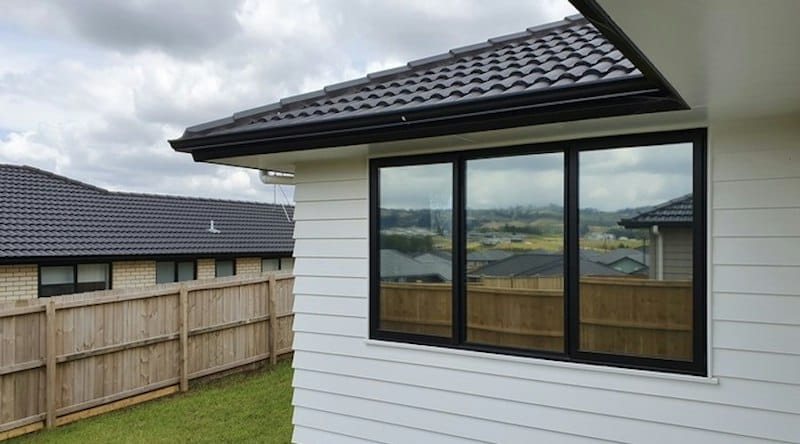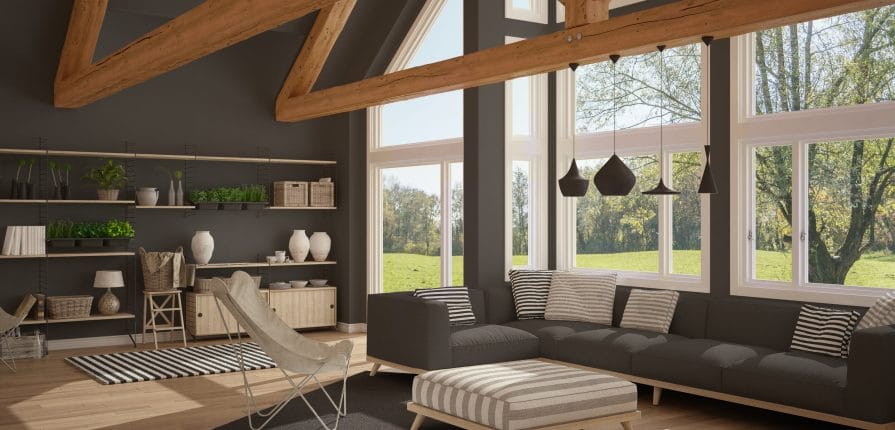When it comes to home aesthetics and functionality, window tinting is a versatile solution offering a blend of style and utility. It not only enhances the visual appeal of your home, but also provides an array of functional benefits, from increased privacy to UV protection and improved energy efficiency.
In this comprehensive guide, we’ll explore the multitude of options among types of window tint for homes and explain how the perfect window film not only enhances privacy but also optimizes natural light in any space, creating a harmonious and comfortable environment. This is essential for homeowners aiming to balance aesthetic preferences with functional benefits.
By exploring the many benefits of window tinting for your home, you’ll discover how comfort, energy efficiency, and UV protection can all foster a more enjoyable home living environment. And remember, every Climate Seal window insert has UV protection, which shields your skin from damaging rays, keeps your furniture and fabrics from fading, and improves indoor comfort by cutting down on heat and glare.
Distinguishing Purple Window Tint
Purple window tint stands out for its distinct appearance compared to other types of window tint. Its unique purple hue offers a non-traditional aesthetic that can add a bold and vibrant touch to a residence’s exterior.
However, it’s essential to note that purple window tint might not be as widely used or as conventional as other tints like neutral or reflective variations. Its unconventional coloration can be seen as a design choice for homeowners seeking a distinctive look that sets their home apart.
Ultimately, the distinguishing feature of purple window tint lies in its unique color, offering homeowners an opportunity to add a bold and unconventional aesthetic element to their residence’s windows.
Exploring Reflective Window Tint For Homes
Reflective window tint for homes is gaining traction due to its exceptional features. Its reflective properties not only enhance privacy by reducing visibility from the outside, but minimizing heat absorption and improving energy efficiency. Reflective window tint also serves as a shield against excess sunlight, which can cause sun damage to homes. Read more about how sun damage happens in this blog post.
These unique features and benefits of reflective window tint for homes contributes to the growing preference for reflective window tint among homeowners seeking a comprehensive solution for their residential windows. It is by exploring the myriad types of window tint for homes that a world of possibilities open up in enhancing both style and functionality within residential spaces.
Advantages of Home Window Tinting
Home window tinting offers several advantages, notably enhancing both comfort and energy efficiency within living spaces. When it comes to temperature regulation, tinted windows help regulate indoor temperatures by reducing heat gain in hot weather and minimizing heat loss during colder seasons. This moderation creates a more consistent and comfortable indoor environment year-round.
In addition, quality window tinting blocks a significant portion of harmful UV rays, safeguarding family members and furnishings from potential sun damage. This protection helps prevent fading, degradation, and discoloration of furniture.
To learn more about the benefits of home window tinting, read this comprehensive blog post.
Disadvantages of Home Window Tinting
Window tinting in residential settings may pose some drawbacks. It can affect the home’s appearance, cause internal reflections, or reduce natural light. Improper installation might lead to issues, and local regulations or cost considerations could also be factors. Understanding these aspects helps in making informed decisions about tinting for your home’s windows.
Ceramic Window Tint For Homes
Ceramic window tint for homes is a high-performance option, particularly when it comes to heat reduction and UV protection.
Ceramic window tint stands apart from other materials due to its unique composition, which includes ceramic particles. Unlike conventional tints, ceramic tint excels in blocking heat by rejecting a higher percentage of infrared rays while allowing visible light to pass through. Additionally, its specialized composition provides superior UV protection, significantly reducing the transmission of harmful ultraviolet rays into the home. These combined benefits make ceramic window tint an optimal choice for homeowners seeking enhanced heat reduction and robust UV shielding while maintaining visibility and natural light inside their homes.
Selecting from the diverse range of types of window tint for homes, including ceramic window tint, empowers homeowners to customize their living spaces, balancing style and practicality for a tailored residential experience.
Privacy Tint for Home Windows
Privacy tints for home windows offer various options to maintain privacy, especially at night. Frosted or etched glass film, one-way mirror film, blackout film, dual reflective film, textured or patterned film, and night vision film cater to different needs, providing varying levels of privacy while allowing for natural light and aesthetic preferences.
A privacy tint for home windows at night ensures a shielded and secluded atmosphere indoors.
To optimize comfort and functionality, understanding the variations among types of window tint for homes, including privacy tit, is crucial for homeowners seeking an ideal blend of style and utility in their living spaces.

Removing Window Tint at Home
For homeowners looking to change or remove window tint at home, understanding effective removal methods and necessary precautions ensures a smooth and safe process without damaging the glass.
One approach involves using a heat gun or a hairdryer to gently heat the tint, making it easier to peel off.
Another method is to create a solution using soapy water and apply it to the tint, allowing it to soak before attempting to remove the film. Some also recommend using ammonia-based cleaners or vinegar to loosen the adhesive for easier removal.
However, precautions should be taken during the removal process. Ventilation is crucial to avoid inhaling fumes from the heated tint or any chemicals used in the removal process. It’s essential to wear gloves to protect your skin, especially if using chemical-based solutions. Additionally, avoid using sharp tools that could damage the window or surrounding areas.
By learning how to remove window tint at home using these simple yet effective methods, you can restore clarity and visibility to your windows effortlessly.
Understanding Ceramic Tint for Home Windows
Ceramic tint for home windows is a popular choice for several reasons. Firstly, it offers superior heat reduction and UV protection compared to traditional tints. Its unique ceramic particle composition ensures exceptional durability, resisting fading and degradation over time.
Compared to other window tints, ceramic tint excels in performance, providing better heat rejection and longevity, making it a premium choice for homeowners seeking long-lasting efficiency and protection for their windows.
Careful consideration of the numerous types of window tint for homes, including ceramic tints, is essential, as it enables homeowners to tailor their choice to match both their aesthetic preferences and practical requirements for residential spaces.
Embracing Glass Laminate Film
Glass laminate film enhances window durability and safety, providing an additional layer of protection against breakage or shattering. It enhances safety by holding shattered glass together, reducing the risk of injuries and deterring forced entry attempts, thus bolstering residential security measures.
Criteria for the “Perfect” Window Film
Defining the ideal home window film involves considering factors like visibility, UV protection, heat reduction, and overall functionality to align with specific homeowner needs and preferences. Keeping your window film cleaning is another important element of keeping it fully functioning. Learn more about cleaning tinted windows in this blog post.
The selection process among the different types of window tint for homes involves balancing personal preferences with the functional advantages each option offers for residential spaces.
Impact of UV Window Tint for Homes
UV window tint shields furnishings and residents from harmful UV rays, mitigating fading of interiors and reducing the risk of skin damage caused by prolonged exposure to sunlight.
Examining the spectrum of types of window tint for homes highlights the options available, allowing homeowners to harmonize their desired aesthetics with functional enhancements for an optimized living environment.
Benefits of Polarized Window Tint in Improving Visual Comfort and Clarity
Polarized window tint improves visual clarity, reduces glare, and enhances overall comfort within residential spaces, offering a heightened viewing experience while maintaining privacy.
Polarized window tint also enhances the view by minimizing intense reflections and shields interiors from outside visibility, creating a more enjoyable living space.
Viability of Liquid Window Tint and its Unique Characteristics
Liquid window tint presents an alternative application method, offering unique characteristics in terms of application flexibility and effectiveness, catering to specific homeowner requirements.
As a flexible alternative to traditional film-based methods, it offers adaptability in application and effectiveness in providing UV protection and heat reduction. It caters to specific homeowner needs by conforming to various window shapes and sizes, providing a customized fit and practical benefits.
Balancing Visibility and UV Protection: Clear Window Tint For Homes
Clear window tint for homes strikes a balance between maintaining visibility and providing essential UV protection, offering a subtle shield against harmful rays without compromising natural light. It preserves furnishings and protects residents from UV-related risks, maintaining a clear view while protecting against fading and health concerns.
Exploring the varieties within the types of window tint for homes provides homeowners with a comprehensive understanding, aiding them in making informed decisions to suit their specific needs and preferences.
What is Matte Window Tint and Why Might Homeowners Prefer it?
Matte window tint includes a soft, non-reflective finish, appealing to homeowners seeking a more subdued aesthetic.
Homeowners might also prefer a matte tint to benefit from its UV protection and heat reduction properties. Its unique look and reduced reflection make it an appealing choice for those seeking a more understated aesthetic for their residential windows.
Understanding the nuances among different types of window tint for homes empowers homeowners to make informed choices, ensuring their selection aligns perfectly with their unique vision for their living spaces.
Conclusion
When considering the installation of types of window tint for homes, exploring the array of available types is essential in aligning both aesthetic appeal and practical benefits to suit individual needs.
From enhancing privacy and aesthetics to making your home more energy efficient and safe from damaging UV rays, window tinting proves to be a versatile option for modern residential spaces, catering to diverse preferences and functional needs.
All Climate Seals window inserts have UV protection, protecting your furniture and fabrics from fading, your skin from harmful rays, and enhancing indoor comfort by reducing heat and glare. In addition, these inserts promote energy efficiency and preserve UV-sensitive items, ensuring a more comfortable and lasting living space.
If you’d like more information on whether window tinting is right for your home, contact the experts at Climate Seal.

